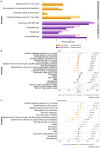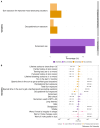Investigating Skin Cancer Risk and Sun Safety Practices Among LGBTQ+ Communities in Canada
- PMID: 39727716
- PMCID: PMC11674060
- DOI: 10.3390/curroncol31120593
Investigating Skin Cancer Risk and Sun Safety Practices Among LGBTQ+ Communities in Canada
Abstract
Background: Skin cancer prevention relies on effective sun safety practices. Previous studies have shown that LGBTQ+ individuals exhibit lower sunscreen use and higher tanning bed usage compared to their non-LGBTQ+ counterparts. This study is the first to assess skin cancer risk factors, sun-protective behaviors, and skin cancer concerns among LGBTQ+ individuals across Canada.
Methods: A national survey study was conducted between July 2020 and March 2024 and included LGBTQ+ respondents aged ≥ 16 years who had completed the survey. Responses were summarized using frequency counts/percentages for categorical variables and means/standard deviations for continuous variables. Logistic regression models were used to calculate age- and gender-adjusted odds ratios for subgroup analyses.
Results: Of the 700 LGBTQ+ participants included (59.3% women; median age 38 years), the majority had a Fitzpatrick skin phototype (FSP) I-III (76.4%). Concerningly, 60% reported >10 lifetime sunburns, 58% reported ≥1 blistering sunburn, 34% had used a tanning bed ≥1 time in their lifetime, and 69% reported having a tan in the last 12 months. Sunscreen was worn regularly by only half of the respondents, and half of the participants agreed or strongly agreed with "I look better and/or healthier with a tan". Additional comparisons are presented based on gender, FSP, education, and income.
Conclusion: The findings of this study highlight the need for public health campaigns tailored to the LGBTQ+ community, emphasizing culturally sensitive sun safety education, particularly for LGBTQ+ men, individuals with FSP IV-VI, and those with lower education levels, to help reduce future skin cancer risk.
Keywords: Canadian health behavior; LGBTQ+ health; skin cancer risk; sun protection; sun safety.
Conflict of interest statement
The authors declare no conflicts of interest.
Figures




Similar articles
-
Sun protection practices among offspring of women with personal or family history of skin cancer.Pediatrics. 2006 Apr;117(4):e688-94. doi: 10.1542/peds.2005-1734. Pediatrics. 2006. PMID: 16585282
-
Sun protective behaviors in sun-sensitive individuals: a cross-sectional study examining for ethnic and racial differences.Arch Dermatol Res. 2023 May;315(4):1023-1027. doi: 10.1007/s00403-022-02415-2. Epub 2022 Oct 27. Arch Dermatol Res. 2023. PMID: 36301344
-
Perception of skin cancer risk and sun protective practices in individuals with vitiligo: a prospective international cross-sectional survey.Arch Dermatol Res. 2024 May 22;316(5):189. doi: 10.1007/s00403-024-02942-0. Arch Dermatol Res. 2024. PMID: 38775848 Free PMC article.
-
A Comprehensive Analysis of Skin Cancer Concerns and Protective Practices in Manitoba, Canada, Highlights Lack of Skin Cancer Awareness and Predominance of High-Risk Sun Exposure Behaviors.Cancers (Basel). 2024 Sep 5;16(17):3093. doi: 10.3390/cancers16173093. Cancers (Basel). 2024. PMID: 39272952 Free PMC article.
-
Prevalence of sunburn, sun protection, and indoor tanning behaviors among Americans: review from national surveys and case studies of 3 states.J Am Acad Dermatol. 2011 Nov;65(5 Suppl 1):S114-23. doi: 10.1016/j.jaad.2011.05.033. J Am Acad Dermatol. 2011. PMID: 22018060 Review.
Cited by
-
Evaluating UV exposure and skin cancer prevention behaviours in Canada: a national population-based cross-sectional study.BMJ Public Health. 2025 Apr 23;3(1):e001983. doi: 10.1136/bmjph-2024-001983. eCollection 2025. BMJ Public Health. 2025. PMID: 40275873 Free PMC article.
References
-
- Ghazawi F.M., Le M., Alghazawi N., Rahme E., Moreau L., Netchiporouk E., Zubarev A., Roshdy O., Glassman S.J., Sasseville D., et al. Trends in incidence of cutaneous malignant melanoma in Canada: 1992–2010 versus 2011–2015. J. Am. Acad. Dermatol. 2019;80:1157–11599. doi: 10.1016/j.jaad.2018.10.055. - DOI - PubMed
MeSH terms
Substances
Grants and funding
LinkOut - more resources
Full Text Sources
Medical

